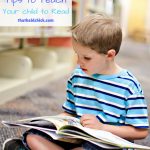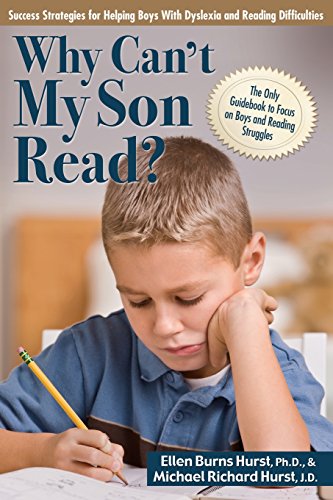From the moment our children are born we want them to be successful. It’s important to know that success starts with something as simple as reading. All children have different timelines for learning to read, but if you want to get your child started off on the right reading foot, here are some good tips to follow…
5 Tips to Teach Your Child to Read
1. Read to Your Child
Teach Your Child to Read in 100 Easy Lessons
Reading always starts with the parent reading to the child. Spend time every day reading something together. You can read your favorite books or even listen to books on audio. Choose books that grab their attention, even if you think they are silly.
This is where children watch your attitude against reading. Keeping a positive attitude will go a long way toward encouraging their reading success.
For a comprehensive approach to teaching your child to read, try the Teach Your Child to Read in 100 Lessons book. It is a complete, step-by-step program that shows patents simply and clearly how to teach their children to read in twenty minutes a day. If you’ve asked yourself, “Where on earth do I start?” this book is for you. If your child is curious about reading and eager to learn, this book is for you. If you catch yourself coming and going and think you couldn’t possibly spend hours laboring to teach your child to read, this book is for you. For most children, Teach Your Child to Read in 100 Easy Lessons is a great method.
In other words, consider getting it now and save yourself a LOT of headaches.
Having books on hand that they’ll want to read is key to opening the door for them.
2. Learn New Words
Sight words are a great place to get started with reading. Your child should know the upper case and lower case letters of the alphabet prior to starting.
There are hundreds of sight words for a kindergartner to get started on and you can just keep adding to the list as your child gets better and better.
Of all of the learning DVDs we have ever played in our home (and trust me, there have been umpteen learning DVDs), the Rock N Learn DVDs are my favorite. We actually own just about every Rock N Learn DVD ever made. The Rock N Learn Sight Words set is seriously cute and it makes learning sight words fun.
Kids read or sing along with engaging characters to learn sight words quickly and automatically.
The Rock N Learn Sight Words set is a 3 disk set that covers all pre-primer Dolch words, all primer Dolch words, all 1st Grade Dolch words, and many words from Fry’s list. Rock out with these characters, and watch your child master sight words while bee bopping around the living room.
3. Phonics is Key
Explode the Code Set of 14– Books 1-8 and Books 1 1/2-6 1/2 Homeschool Kit in a Bag
Some children learn to read by word memorization. In fact, most kids learn to read by a mixture of word memorization and phonics.
Even if your child is memorizing words, it’s still important that they know the sounds that letters make. There are many phonics programs out there, but you can also start with the basics by teaching your child the sounds of each letter and then move onto blends and putting words together.
Explode the Code provides a sequential, systematic approach to phonics in which kids blend sounds to build vocabulary and read words, phrases, sentences, and stories. Frequent review of previously learned material helps cement concepts.
My oldest daughter has what is termed “double deficit learning disability.” We like to say learning difficulty, because it doesn’t have to prevent her from achieving anything.
She’s the child that 100 Easy Lessons wasn’t the best method for. We attempted several different phonics programs and they all resulted in tears and frustration. We finally found her groove with a combination of the Orton Gillingham method, the Wilson Reading System, and Explode the Code workbooks has proven to be her method.
Less than a year ago, my daughter would do everything, including misbehave, to get out of reading. She started second grade unable to read three letter words consistently. She now reads at a 1.5 grade level and asks to read to us daily. I’ve watched my daughter blossom into an eager reader. Her confidence is blossoming, too.
Why Can’t My Daughter Read?







4. Sounding Words Out
LeapFrog LeapReader Reading System
Most children that are learning to read will go through a phase of sounding out words. This is how kids learn bigger words and learn how to eventually recognize those harder words. You and I understand and recognize words because we went through the same process of “sounding them out.” With my son, I taught him the ladder blends and he took off from there. At an early age, he zipped through books on his LeapFrog LeapReader system with ease.
Using the LeapFrog LeapReader System made the task of learning to sound out words as read seem less daunting.
They could move along as fast, or as slow, as they wanted and could repeat chosen words when they wanted.
Kids love interactive tools like this, because they don’t feel pressured.
As an added bonus, the LeapFrog LeapReader system can be used to teach writing, too, as the system guides letter strokes and size.
5. Comprehension is Important
When you’re teaching your child to read, make sure you are asking questions. It’s important that your child understands exactly what you’re trying to teach them. It’s always a big deal when they can repeat back exactly what you’re trying to get across. Remember, some children learn best while active. Keep the reading time fun for them. If they need to be busy, give them paper and colored pencils or crayons and encourage them to draw what you’re reading.
Crayola Sketchbook

Teaching your child to read should be a fun experience. If you find that it isn’t fun for either one of you, step back and rethink your approach. Some children read later than others, so it could be that your just isn’t there yet developmentally. If you think there may be an underlying cause preventing your child from conquering reading, don’t hesitate to get help.
While dyslexia has made it extremely challenging to learn to read, it also means that my daughter is developing other life long attributes like perseverance and the ability to think outside of the box. Learning difficulty does not have to equate to a lifelong disability. Two books that have helped me, as a parent of a child with learning challenges are The Dyslexic Advantage and The Gift of Dyslexia. I highly recommend them to any parent who has a child that learns differently.
&
The Dyslexic Advantage




















